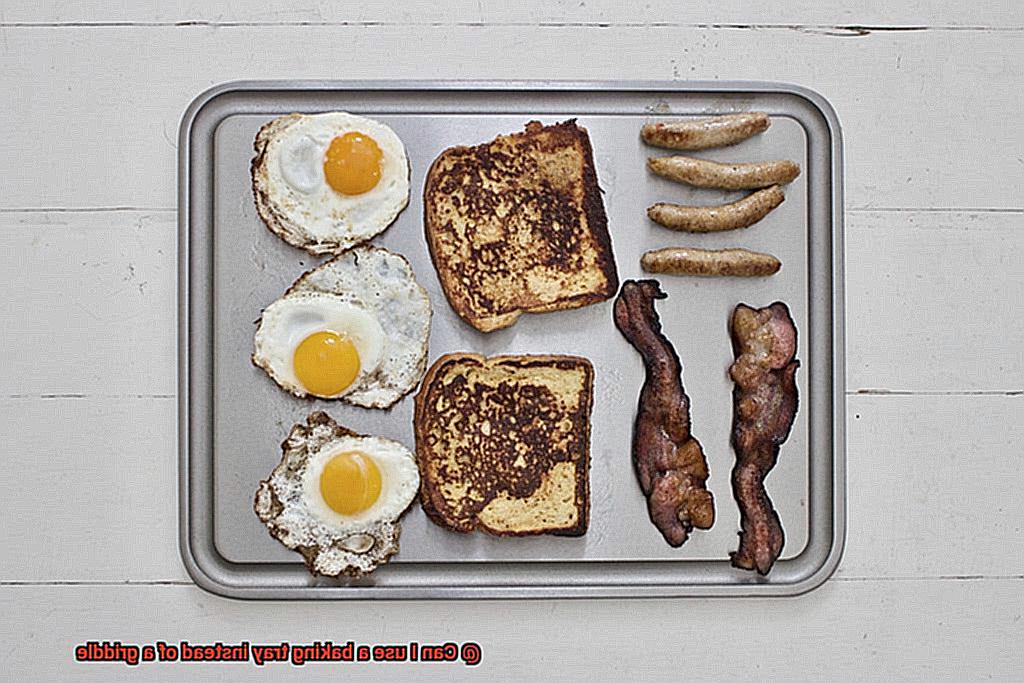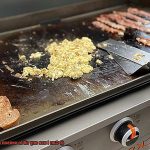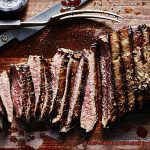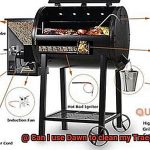Are you craving pancakes or eggs for breakfast but don’t have a griddle on hand? Fear not, my friend. You’re not alone in this dilemma. Many of us have wondered whether we can use a baking tray instead of a griddle to cook our favorite breakfast items.
The answer is simple: yes, you can use a baking tray as a substitute for a griddle. However, there are some caveats to keep in mind. A baking tray is not specifically designed for cooking pancakes, eggs, and other breakfast foods like a griddle is.
In this blog post, we’ll delve into the differences between a baking tray and a griddle and explain how to use your trusty baking tray as an alternative. We’ll also provide some tips to help you achieve the perfect results so that your breakfast items taste just as delicious as if they were cooked on the traditional griddle.
Whether you’re feeling adventurous or are simply out of options, read on to learn everything you need to know about using a baking tray instead of a griddle. By the time you finish reading, you’ll be ready to whip up scrumptious pancakes and eggs using your trusty old baking tray.
Contents
What is a Baking Tray?
A baking tray, also known as a sheet pan or cookie sheet, is a flat metal tray with raised edges that is used for baking or roasting food. These versatile kitchen tools are made of aluminum, stainless steel, or carbon steel and come in various sizes and shapes to fit different recipes and cooking needs.
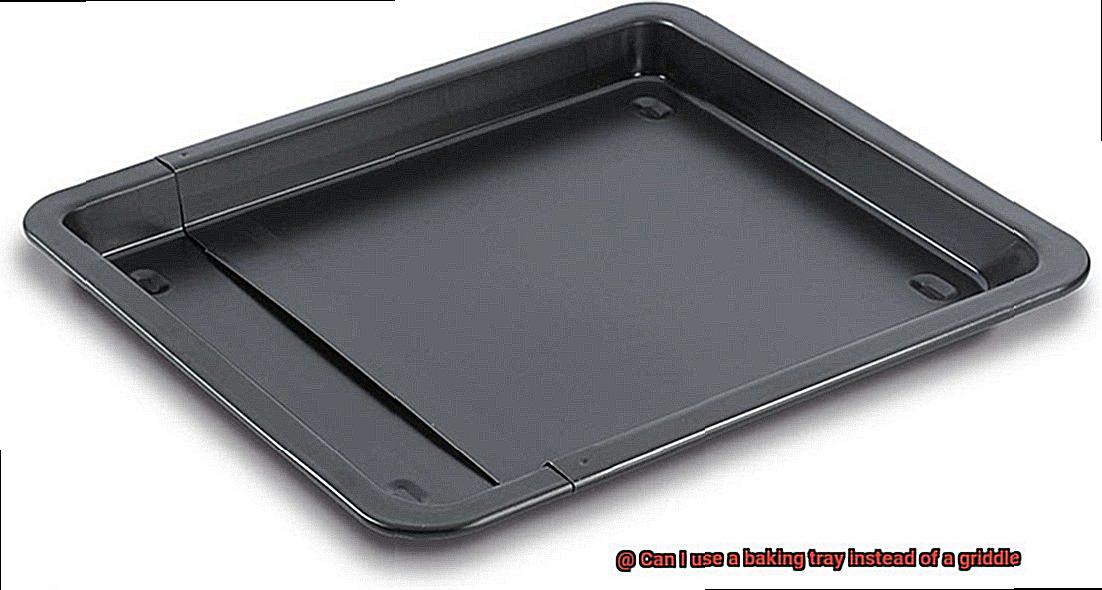
The raised edges of a baking tray come in handy when cooking messy or greasy foods as they help contain any spills or drips while cooking. These trays are commonly used for baking cookies, pastries, and other baked goods. They’re also great for roasting vegetables, meats, and fish. While they can work as a substitute for certain types of foods when grilling, it’s important to note that baking trays are not designed for high-heat cooking like a griddle.
Using a baking tray is simple. Preheat your oven to the desired temperature and place the tray inside to heat up. Once hot, carefully remove it from the oven and place it over your stovetop burners. You can then cook your food directly on the tray.
One of the best things about baking trays is how easy they are to clean. They can be washed by hand or in the dishwasher, making cleanup quick and effortless.
What is a Griddle?
A griddle is a flat cooking surface constructed from cast iron, steel, or aluminum. Its surface has no raised edges or rims, which makes it perfect for cooking food items such as eggs, bacon, burgers, and pancakes. Griddles come in an array of sizes and shapes and can be used on a stovetop or as a standalone unit.
One of the most significant benefits of using a griddle is its even heat distribution, ensuring that food is cooked to perfection. With a non-stick or seasoned surface, griddles are easy to use and prevent food from sticking. It’s no wonder they’re a popular choice for cooking large quantities of food at once.
Griddles are versatile appliances that can be used for cooking a wide variety of foods. They are ideal for breakfast items, making them perfect for large groups of people. Additionally, they’re great for cooking meat items because they help retain the juices and flavors of the meat.
Griddles come in all shapes and sizes, so it’s essential to choose one that suits your needs. If you’re short on space, a stovetop griddle is an excellent option. Alternatively, if you’re serious about your breakfast game, consider investing in a standalone griddle with temperature controls and additional features.
Advantages of Using a Griddle
As an expert in the advantages of using a griddle, let me show you how this kitchen superhero can help you achieve perfect results every time.
One of the best things about a griddle is its larger surface area. You can cook more food at once, which is especially useful when cooking for a large group of people or when you’re simply hungry and want to speed up the cooking process. No more waiting around for batches to cook.
But it’s not just about size – a griddle also offers even heat distribution. This is crucial when cooking meat or other foods that require a consistent temperature. Unlike a baking tray, which can produce hot spots and lead to unevenly cooked food, a griddle ensures that every inch of your food is cooked to perfection. So, whether you’re cooking a steak or veggies, you’ll get consistent results every time.
And speaking of perfection, a griddle allows for better searing and caramelization of food. The flat surface creates a large contact area between the food and the heat source resulting in a crispy crust and tender interior. Imagine biting into a juicy burger with that restaurant-quality sear – that’s what using a griddle can do for you.
But wait, there’s more. Griddles are also easier to clean than baking trays. Most griddles are non-stick, which means food won’t stick to the surface. And if you’re lucky enough to have a dishwasher, many griddles are dishwasher safe, making cleanup a breeze. Say goodbye to scrubbing burnt-on food off your baking tray.
In conclusion, using a griddle has numerous advantages over using a baking tray. Here’s a quick summary:
- Larger surface area means you can cook more at once.
- Even heat distribution ensures consistent results every time.
- Better searing and caramelization of food.
- Easier to clean with non-stick surfaces and dishwasher safe options.
Disadvantages of Using a Baking Tray Instead of a Griddle
When it comes to cooking, the right equipment can mean the difference between a mouthwatering masterpiece and a disappointing disaster. While baking trays have their place in the kitchen, they may not be the ideal choice for grilling. Here are some of the disadvantages to consider when using a baking tray instead of a griddle:
Firstly, uneven heating can be a major issue when using a baking tray on a stovetop or grill. Unlike griddles, which are designed to distribute heat evenly across the surface, baking trays may cause some areas of your food to cook faster than others. This can result in unevenly cooked food and an unsatisfactory end result.
Secondly, lack of surface area is another limitation of a baking tray. As compared to griddles, baking trays are generally flatter and have less surface area. This means that you may not be able to fit as much food on a baking tray at once as you would on a griddle. If you’re cooking for a large group or trying to cook multiple items simultaneously, this can be frustrating.
Thirdly, the absence of raised edges is another disadvantage of using a baking tray. Griddles typically have raised edges that help contain any juices or oils that may run off your food while cooking. Baking trays, on the other hand, are flat and do not have raised edges. This can result in juices and oils spilling over onto your stovetop or grill, which can cause flare-ups and make a mess.
Lastly, flipping food on a baking tray can be difficult, especially if it’s something like pancakes or eggs that need to be flipped quickly and carefully. Griddles have a flat surface that makes flipping food much easier and more efficient.
Tips for Cooking with a Baking Tray as an Alternative to a Griddle
Are you tired of using a griddle or don’t have one at home? Using a baking tray as an alternative can be a great option. However, there are some important things to keep in mind to ensure your food turns out perfectly. Here are some tips and tricks for cooking with a baking tray:
- Preheat the Tray: Preheating the baking tray is crucial for even cooking and preventing sticking. You can preheat the tray in the oven at the desired temperature for about 10 minutes before placing your food on it. This will also help your food cook evenly from top to bottom.
- Use Oil or Cooking Spray: To prevent your food from sticking to the tray, brush some oil or spray cooking spray on the surface of the tray before placing your food on it. This will create a non-stick surface and help your food cook evenly. Be sure not to use too much oil, as this can cause your food to become greasy.
- Flip Carefully: Flipping your food may require more effort with a baking tray compared to a griddle. You will need to use tongs or a spatula to flip your food carefully to avoid it from falling apart. It’s also important to wait until one side is fully cooked before flipping it over.
- Choose the Right Size: When cooking with a baking tray, be mindful of the size of your food and the tray itself. A smaller tray may not have enough surface area for your food to cook evenly, while a larger tray may require more oil or cooking spray. It’s also important to leave some space between each piece of food to allow for even cooking.
- Keep an Eye on Your Food: When cooking on a baking tray, keep an eye on your food and flip it regularly to ensure that it cooks evenly. You may also need to adjust the temperature and cooking time compared to using a griddle. It’s also important to avoid overcrowding the tray, as this can cause your food to steam instead of roasting or baking.
Common Foods to Cook on a Baking Tray or Griddle
If you’re looking to switch up your cooking routine, consider using a baking tray or griddle. As an expert on the topic, I’ve compiled a list of common foods that can be cooked on either surface.
Breakfast lovers rejoice. Pancakes and bacon are two favorites that can easily be prepared on either a griddle or baking tray. Flipping pancakes on a griddle or baking them in the oven on a baking tray are both excellent options. And while bacon is traditionally cooked on a griddle, baking it in the oven on a baking tray produces a crispy and evenly cooked result.
Vegetables are another group of foods that can be cooked on both surfaces. Roasting vegetables in the oven on a baking tray allows their natural flavors to shine through while creating a crispy texture. Grilling vegetables on a griddle caramelizes them and gives them a smoky flavor that’s hard to resist.
Meat lovers, rejoice too. Both surfaces can produce tender and juicy results. While grilling meat on a griddle is more traditional, baking it in the oven on a baking tray can be just as effective. For example, roasting chicken breasts with vegetables in the oven on a baking tray creates an easy one-pan meal that’s sure to impress.
And last but not least, desserts can also be cooked on both surfaces. Baking cookies and brownies in the oven on a baking tray is perfect for satisfying your sweet tooth. And for those who enjoy pancakes or crepes, they make for an excellent dessert option when cooked on a griddle.
Safety Considerations When Cooking with a Baking Tray or Griddle
We should never overlook the importance of safety when using these hot surfaces. Here are some crucial safety considerations to keep in mind when cooking with a baking tray or griddle.
First and foremost, always use oven mitts or pot holders when handling a hot baking tray or griddle. These tools can retain heat for a long time, even after being removed from the heat source, and can cause serious burns if touched with bare hands. Therefore, make sure to protect your hands with proper gear before handling any hot surface.
In addition, it’s important to use caution when pouring liquids or oils onto a hot baking tray or griddle. The sudden introduction of liquid onto a hot surface can cause spattering, which can lead to painful burns or even start a fire if the oil ignites. So, take your time when adding liquids to your cooking surface to avoid any accidents.
Another safety consideration is to ensure that the baking tray or griddle is placed on a stable and level surface when in use. A wobbly tray or griddle can easily spill its contents or even tip over, causing injury or damage to surrounding surfaces. To prevent this, make sure your cooking surface is sturdy and secure before starting to cook.
Lastly, maintaining a clean baking tray or griddle is critical for safe cooking practices. Debris on the surface can cause hot spots and uneven cooking temperatures, which can lead to undercooked or burnt food. Regular cleaning and maintenance of these cooking tools will not only ensure safe cooking practices but also help them last longer.
__sOPGXAVdE” >
Conclusion
In conclusion, while using a baking tray as a substitute for a griddle is possible, it’s important to understand the limitations that come with it. Although breakfast items can be cooked on a baking tray, it’s not specifically designed for high-heat cooking like a griddle. However, if you’re feeling adventurous or are out of options, there are ways to achieve the perfect results so your breakfast items taste just as delicious as if they were cooked on a traditional griddle.
Before using a baking tray instead of a griddle, keep in mind the differences between the two. A baking tray is ideal for baking or roasting food and has raised edges that come in handy when cooking messy or greasy foods. In contrast, a griddle is perfect for cooking food items such as eggs, bacon, burgers, and pancakes due to its even heat distribution and larger surface area.
If you decide to use a baking tray instead of a griddle, preheating the tray and using oil or cooking spray are crucial steps to ensure even cooking and prevent sticking. While flipping food on a baking tray may require more effort than on a griddle, keeping an eye on your food and flipping it regularly will help ensure even cooking.
Safety considerations should never be overlooked when using hot surfaces like baking trays or griddles. Always use oven mitts or pot holders when handling hot surfaces and ensure that your cooking surface is stable and level before starting to cook. With these tips in mind, you’ll be able to whip up scrumptious pancakes and eggs using your trusty old baking tray.

